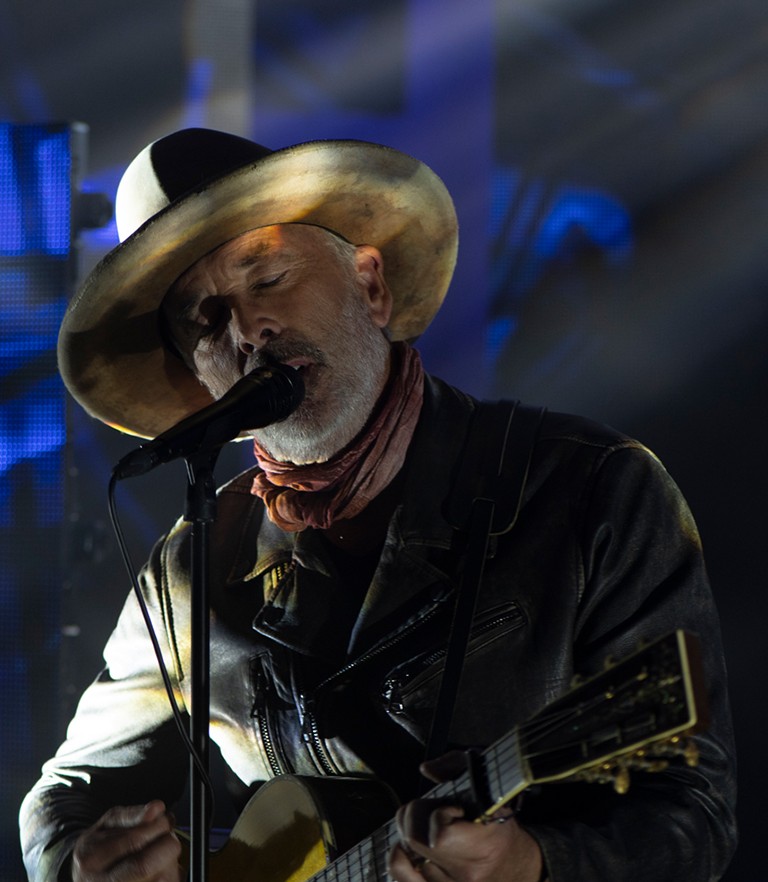Michael Marquart, the multi-talented singer-songwriter, producer, and frontman of rock project A Bad Think, is back after his 2019 Grammy nomination for Best Immersive Audio Album for his album The Savior. This time, he’s pushing more boundaries with an album designed specifically for 3D audio output using the technology everyone’s talking about: Dolby Atmos.
In addition to the album, Michael is bringing fans and audiophiles a short, behind-the-scenes look at how the album was made with a documentary directed by filmmaker Derrick Borte. (You can view the documentary here.) We had a chance to chat with Michael, and he was gracious to share more about not only Lifelike, but also lessons learned from his 50 years as a musician.
Tell us about creating Lifelike. Was the recording process different from previous albums since you knew you were wanting to mix it in Dolby Atmos?
The whole thing started on the last album, The Savior, which was nominated for a Grammy for Best Immersive Audio Album last year. So that really gave me an idea: what if we take it to the next level? How far can we take it? So, I talked to Dave and told him what I wanted to do.
There’s the normal kind of miking system, when you make a drum or mike up a guitar amp or something like that. That process was basically the same.
But the ambient mics - the Sennheiser Ambeo, the Neumann KU 100, and Barnaby, which are 3D mics - those were placed strategically in the room to track. You have to track this all at the same time. You can't re-amp it and do a fake job of doing immersive audio or surround sound audio. It has to be done at the beginning. So the whole thought process from the beginning went into thinking about: How is this going to work in the Atmos mode?
We planned out where we were going to record it. It had to be a big enough room. We wanted to do a couple of songs with two drummers, you know, like maybe one drum set in the back and one drum set in the front or one on the side, and one on the other side to keep our options open when it came time to mix.
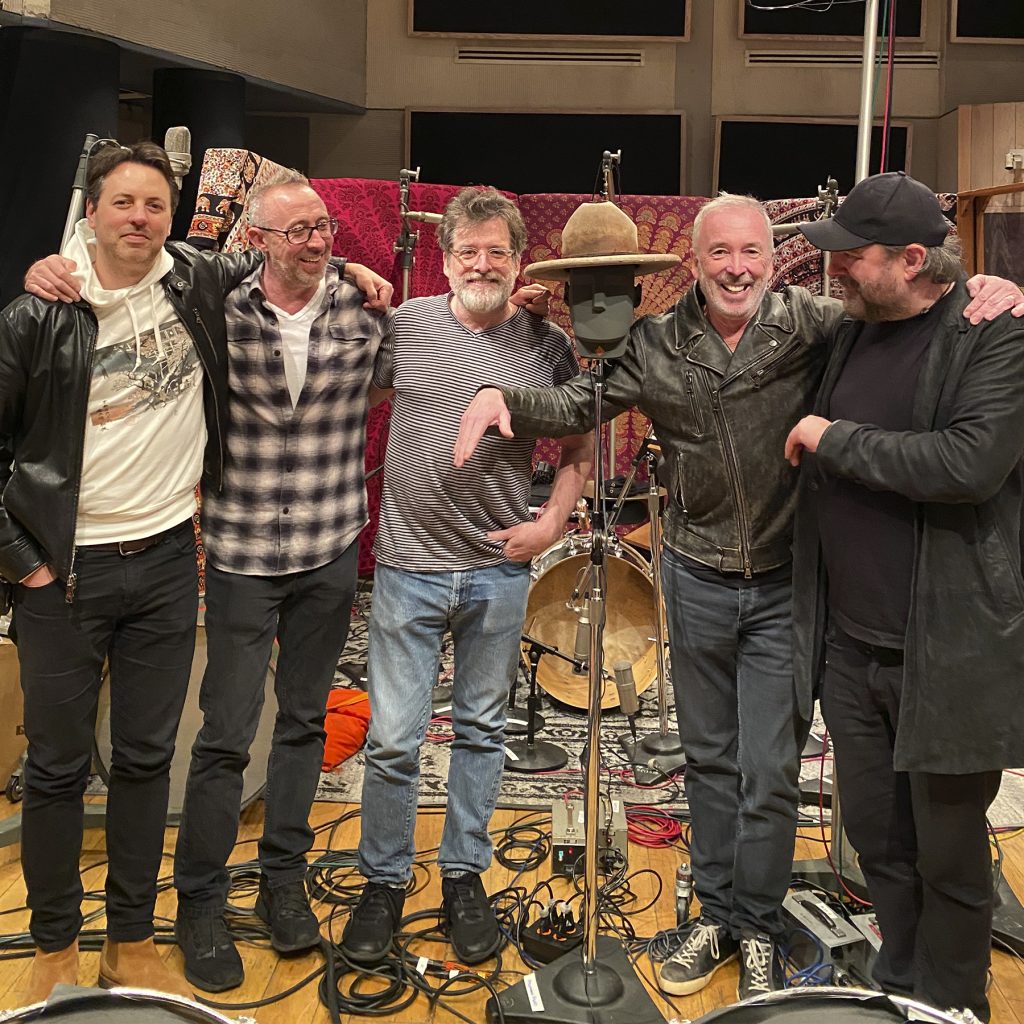
Would you say there's a lot more pre-planning involved with an Atmos album?
Well, it's kind of the Wild West out there, and we're really pushing the audio side of Atmos. It's really been a movie thing. When you go to movies, you’ll hear a helicopter come overhead from behind, and all that stuff. And that's where it's been used for years, and we’re pushing this thing into the music side.
There's so many things that you want to do, but we just can't do yet because the technology is not there yet. And so we keep pushing Dolby: Well, can you do this? Can you make this for us? I'm sure those guys are just overwhelmed with things that people are asking to do. And Dave Way and Steve Genewick, generally, those guys are figuring this stuff out as we go. Just for instance, getting the Atmos files. The Atmos files are done for this album. It's mixed, but getting the thing rendered over to be sent to Blu-ray - it's not translating right. The pans aren't right. Movements that are supposed to be on the left are on the right, or they’re not there. So they got to figure out: what's wrong, and how do we fix it? And this is only one example.
Were there many obstacles?
Yeah, a lot of them actually. Everything was recorded at 96k with the sampling rate at 24-bit. But Atmos couldn’t do 96k. Like, what?! So the whole thing had to be dumbed down to 48 because the technology is not there yet.
There's no mastering either. So you have to EQ and final compress and all that kind of stuff. You have to do it on the fly because they don't have that yet. I asked those guys, Well, why can't we figure out a way to glue the whole space together? Then you could assign EQ and compression on the entire 360 space to go. It was relayed on to Dolby, we’ll see what happens.
You worked with great engineers and producers on this album: Steve Genewick, Dave Way, and Bob Clearmountain. Can you share a bit more about how you chose all your musical collaborators?
I told Dave we had to have the best there is - the best for the style of music. So, we talked about it, and he lined up and organized the best. Sean Hurley played bass on The Savior. He's one of the best session players and one of the best bass players there is.
We got him and Jeremy Stacey, who’s from London. He was touring with King Crimson, and going through LA at the time. We asked him if he would like to connect to do the drums, and he said he'd love to. So we got Jeremy, who has been on so many great albums. He’s an unbelievable drummer.
Phil Shenale was on The Savior as well. He did the keys for Tori Amos. These guys are absolutely the best.
Kirk Hellie we didn't use before, but he's a guy that thinks outside the box, which was actually perfect for this kind of music. We weren't looking for someone to just play the chords. we wanted something completely different, and something that people wouldn't be expecting to hear coming out of a guitar player. And he was perfect.
Jacob Bunton played guitar and sang background vocals. He is a very good friend. He and I wrote and recorded an album together three years ago for our side project, “Myja.”
David Ralicke played all of the sax on the record.
We kept it pretty close to the chest as far as who was involved.
Back to The Savior and the Grammy nomination. How did you feel when you first found out you were nominated?
I was shocked. Of course, at my age of 63, most people aren't even playing music anymore. I mean, frankly, most musicians my age are dead already. So having something like that happen now was quite a surprise. And it was certainly nice to get a little bit of recognition from the 50-some years I've put into the music industry and my music in general. So, it was pretty exciting.
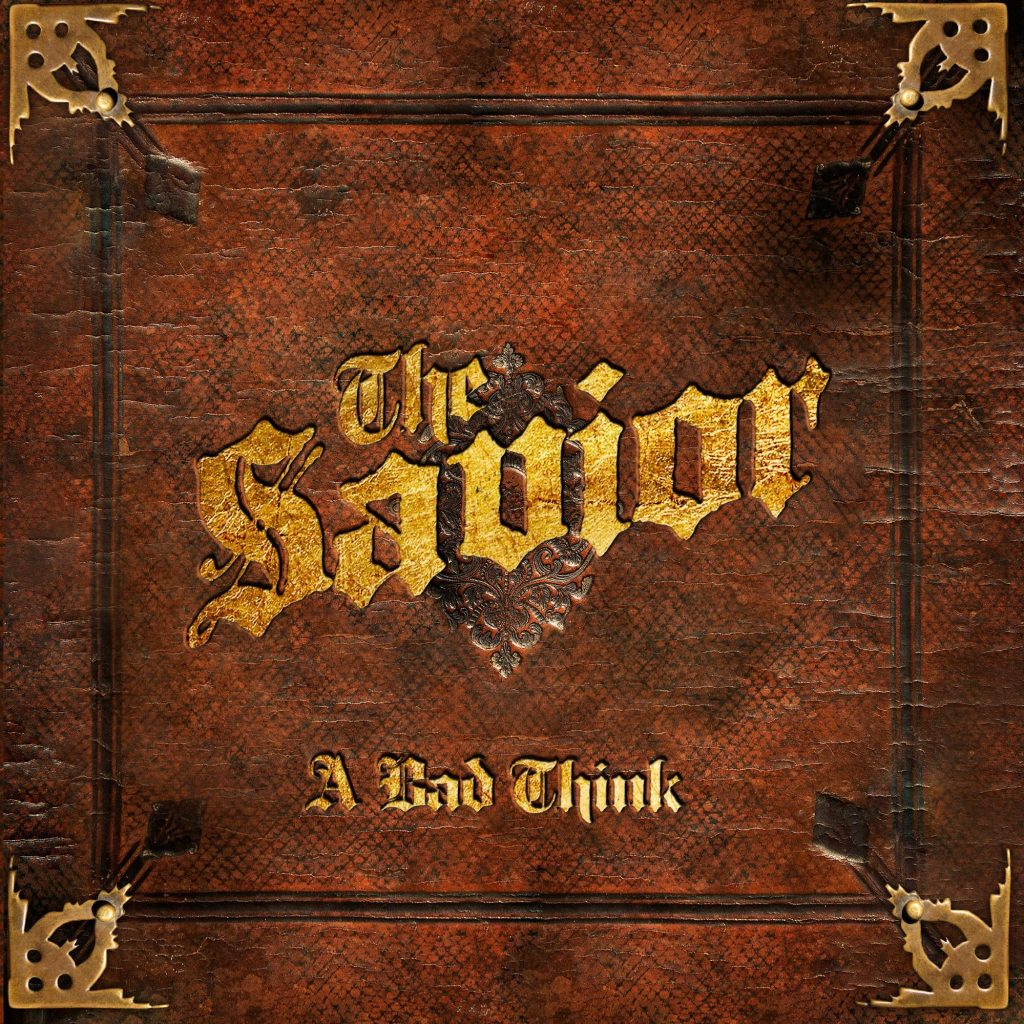
With so many recent changes in the industry, particularly with immersive audio, what about the music industry have you seen remain the same over the years?
Well, nothing ever remains the same. It's always evolving, and styles change. And it will never stay the same.
Sadly, the music industry is in such a bad place, especially for musicians. The labels and the streaming services are making money, but the musicians aren't making anything. It's really sad, especially when you think about how long it takes to learn how to play guitar. 10,000 hours isn't enough to be good at it. You have to commit your life to this.
But what really gave me a little bit of hope was hearing an Elton John song in Atmos. It was so exciting. It just made me excited about music again. Once the hardware can catch up with the software, people can listen on their phones and get completely engulfed and absorbed into the music again. To make people want to hear music at a high level and great quality, I think that potentially is the game changer to push music into a new area that it's never been in before.
Do you think the biggest barrier to creating and enjoying more music in Atmos is the hardware catching up to the software?
Well, it's not that easy. Most everyone can make records in their basement and record vocals in their closet. And that's what's happening. You can't do that with Atmos. You need big rooms.
When we recorded, the space is what you're really dealing with. We were at Henson in their Studio D, which is the largest room they have. There was an old vintage Sony C-37 way up in the corners, and all this technology to just capture the room’s ambience that you can pan that ambience to. You can pan to the left or the right or underneath or above to almost paint a picture.
You can’t do that in a closet. So, your everyday musician ain't gonna be able to do it. You're gonna have to go to a real studio, which might help those guys. There aren’t many of those left either.
Tell us about the documentary, what sparked your interest in making one about this particular album?
I wanted to try and make people understand what Atmos is and how it's done. It's all kind of smoke and mirrors and voodoo. No one really knows it, until they experience it. It’s more like, Oh, wow. Does that sound cool?
No one has really documented from the ground up how Atmos records are recorded. As far as I know we're the only rock act that's actually started from the ground up - recording it with Atmos as our final goal. The classical guys, mainly over in Europe, have been doing that for a while.
We wanted to show people what it's like. It's really interesting, especially when you watch the documentary and see how we're doing it.
Derrick Borte shot the documentary, and you collaborate on music videos as well. How did you two meet?
He's from Virginia Beach. We had the same trainer at the gym. Derrick was the director of a big movie called The Joneses. There were a bunch of stars in it, and it did well. We met and had lunch. I don't know how we got on the subject of doing a music video. The first one we did was “Overstay.” I remember it was all done on a 5D digital SLR. But it's great. If you watch that video now, it still holds up. It's one of my favorites.
Artists are strange. I mean, that's the only thing I can say. Derrick doesn't like to do a lot of music videos, even though a lot of people ask him. But he loves doing the videos with me because they’re really fun and there are no rules. It’s a lot of, Well, what if we do this? What if we do that?
We’ve done maybe 8 or 10 videos now, and it’s getting harder and harder to outdo what we've done before. These last two videos were pretty much kind of a live performance thing, and we've never done that before.
He's a real good friend. And when I'm on the East Coast we have lunch at least once a week.
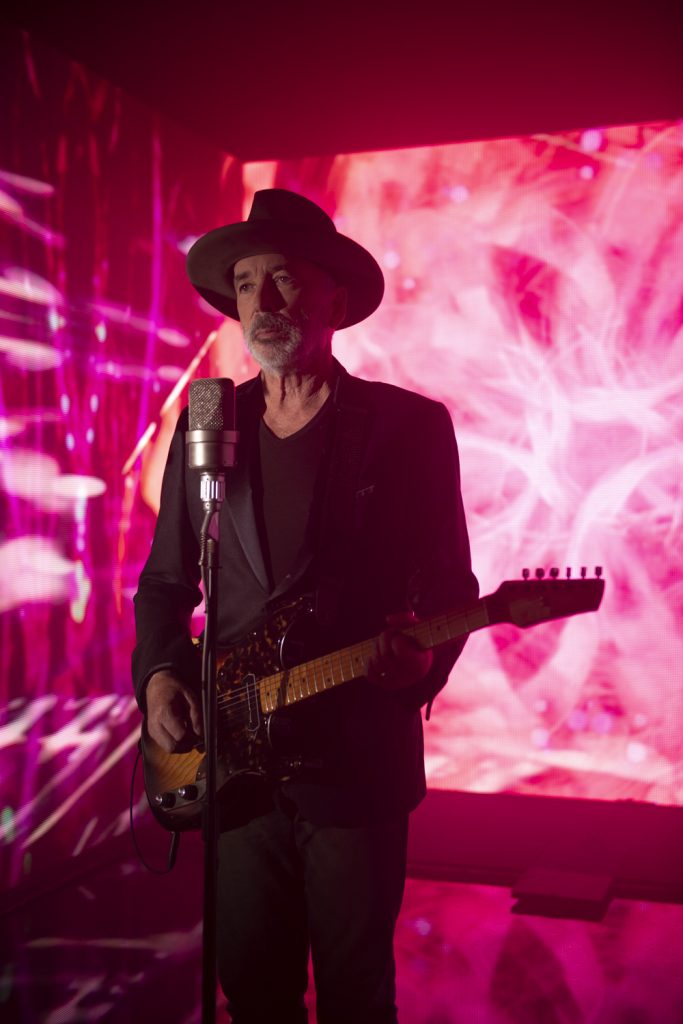
Have your sources of inspiration changed as your style has evolved?
Yeah, you know, I find myself drifting more into country, which is interesting. I really like it. With the whole COVID thing and the political environment in the United States - and in the world, for that matter - a lot of that stuff is reflected in the lyrics of the stuff I'm currently writing.
I'm always a victim of where I am, what I'm feeling, where I'm going, and where I'm at in life. And my lyrics always reflect that.
I tell my kids, if you really want to know who I am, listen to my songs. Start from the first one and listen to them. And you'll see who I am.
You have studios in Virginia Beach and Los Angeles. Do you find you're more creative in Virginia Beach versus LA?
No, it's completely the other way around. It's almost depressing in a way because in LA, I have this circle of very talented musicians. All of my friends have always been musicians because I was on the road for 40 years. You play with a band, and you're playing 28 nights a month. So, your friends are the musicians in the band and the road crew. That's who you see every day.
I went to college for one year as a music major and then quit to go out on the road. So, I never developed those lifelong relationships a lot of people do when they go to college in fraternities and sororities.
So really, Virginia Beach is like a black hole for me. I really do a lot writing on both coasts, but in LA, I feel more plugged in and connected with the musicians that I grew up with and who understand who I am. In Virginia Beach, there's no one like that. I have a couple of really good friends. But they're not lifelong musicians, so they don't understand. You can't expect them to.
It's tough because it's a military town. There are F-15’s flying all over the place. So, if I want to record a track, I gotta wait for the airplane noise to die down.
You mentioned earlier that you're starting to get into country music. Do you have any favorite country artists that you're listening to now?
I don't listen to a lot of country music, but I want to apply the kind of simplicity of country to my style of music. Back in the days of Hank Williams and Jimmie Rodgers, country music was always defined as “Three Chords and the Truth.” Every single one of those country songs sound exactly the same. It's the same chords, the same beat, the same instrumentation, and all that stuff. There's nothing complicated about it. It's three chords and the truth. And I really love that.
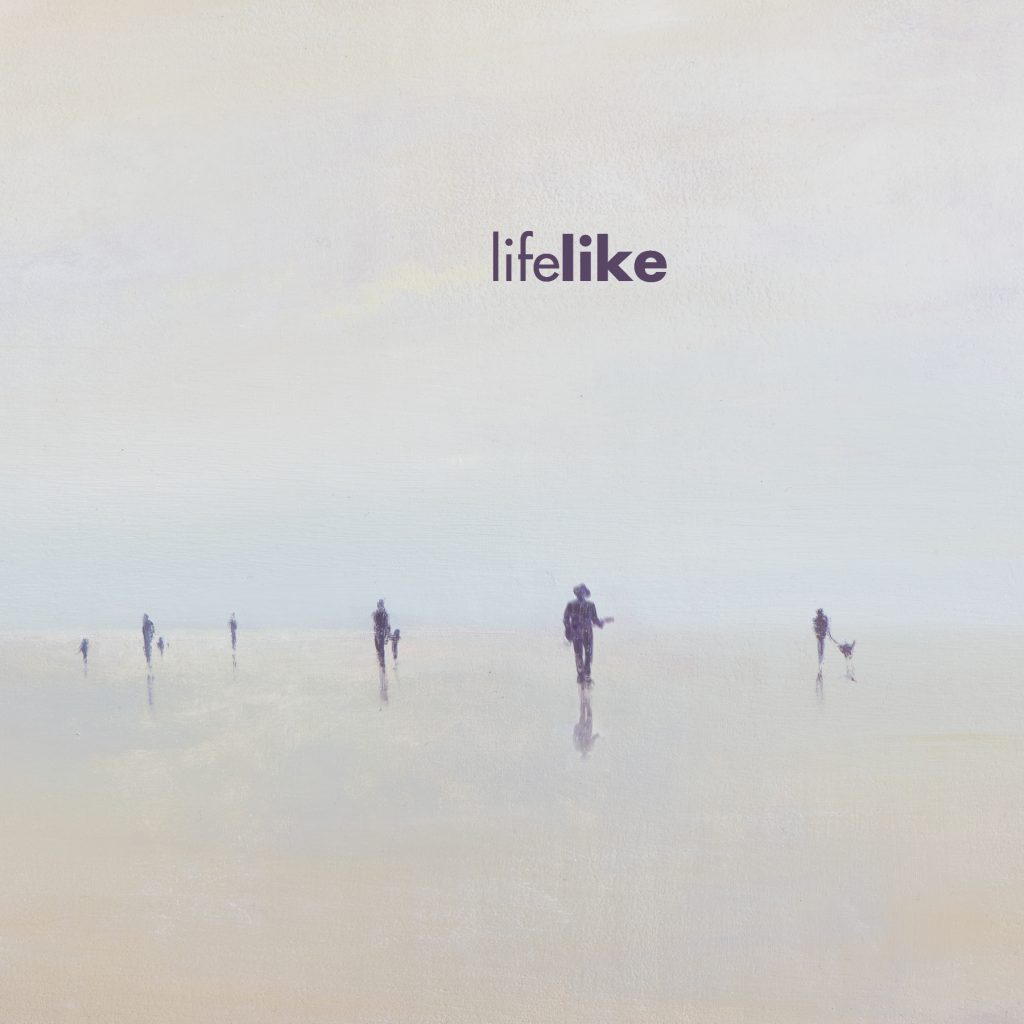
Looking back, what advice would you give your 18 year old self when you were establishing a career as a musician? And did you see yourself as a career musician at that point in time?
I saw myself as a career musician as early as I can remember. When I was in grade school, I knew what I was going to do. A lot of people don't know what they're going to do even when they go to college. I always knew what I was going to do, and never even thought about anything else.
And you know, I got off track. In the early days, we were doing really creative music. In the 70s, everyone was just hungry for hip stuff and something new and something creative. There weren't any rules. It was just a great time to be making music, but you really couldn't get any work.
You had to play the music that was very simple - what was on the radio. You had to play the music everyone wanted to hear. I probably wasted, I don't know how many years on bands like that. I was playing New Wave or heavy metal or just different versions of rock instead of sticking to my creative guns.
Lord knows how far I would have developed if I hadn’t wasted 15 years just playing commercial songs and trying to land something that sounds like the band of the moment. Like Van Halen - everyone was signing Van Halen bands. Record labels didn’t know the difference. Selling is all they care about, so they'll sign a million Van Halen bands.
So, you make a sound like that to hopefully get signed. Then you're just chasing your tail instead of being true to your art and true to your music that makes you unique from everyone else. I wish I would have stayed on that path. But I think that's what I would tell my 18 year old self. Don't lose your focus.
There are more musicians now who speak out against record labels, and you see more musicians creating music on their own, like you. What do you think of that trend?
Most of the guys I know that are signed in major label contracts are trying to get out of them. If they do get out, they have to pay a hefty price. But a lot of these labels made them big and made them successful. So I guess a label gets to demand some recompense for making them famous and making it easy for them to sell records.
But the problem with a lot of musicians now is that no one's any good. The new music that's out there, it's very average in my opinion. In my day, you had to be the best there is to stick out. Everyone was trying to be the best there is, and you just don't see that today. Musicians don't want to put the work in. It really shows.
We have to find a way for musicians to make a living at being good at what they do. That'll start the next generation.
Hopefully the pendulum starts swinging the other way again for quality music.
I hope so, just for the sake of the music itself. It's such a powerful medium, and it talks to people in every language. It cuts right to the soul. It's so powerful. So, it really bums me out to see what it's becoming.
Maybe Atmos will be the spark that will introduce more creativity moving forward.
The light at the end of the tunnel is what that is. There's no way you can't listen to that and not be inspired to go out in the woodshed and start doing scales. To be able to reach people at such a deeper level? It's the light at the end of the tunnel for me.
...
Watch Lifelike: The Making of an Album in Dolby Atmos here, and make sure to check out the album when it releases this spring!
